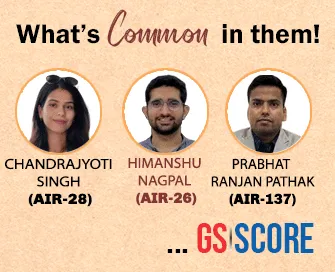
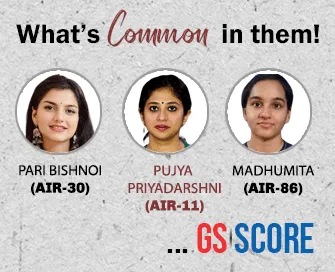
12th July 2025 (13 Topics)
Mains Issues
Context:
On 11th July 2025, former CJIs D.Y. Chandrachud and J.S. Khehar, while affirming the constitutionality of the Simultaneous Elections Bills, expressed concern before the JPC over the unchecked powers granted to the Election Commission of India.
Simultaneous Elections: Legal Validity vs. Institutional Accountability
Background: Simultaneous Elections and Legislative Proposals
- Concept: Holding Lok Sabha and State Assembly elections together.
- Bills Under Review:
- Constitution (129th Amendment) Bill, 2024 – seeks to amend key provisions to facilitate simultaneous elections.
- Union Territories Laws (Amendment) Bill, 2024 – aligns UTs with the simultaneous poll framework.
One Nation, One Election & Constitution (129th Amendment) Bill, 2024
Key Provisions of the Constitution (129th Amendment) Bill, 2024
- Article 82A: Synchronization of Elections
- Clause (1): President to notify the “appointed date” – first sitting of Lok Sabha after general election.
- Clause (2): All State Assemblies elected after this date will terminate with the term of Lok Sabha.
- Clause (3): Mandates simultaneous elections to Lok Sabha and all State Assemblies.
- Clause (4): Defines "simultaneous elections" as elections for both the House of the People and State Assemblies together.
- Clause (5): Allows Election Commission of India (ECI) to exempt any Assembly election from being held simultaneously, advising the President accordingly.
- Clause (6): Assemblies elected later will also end with the term of Lok Sabha.
- Amendments to Article 83 & Article 172
- If Lok Sabha or State Assembly is dissolved before completing 5 years:
- The new body will be constituted only for the unexpired term.
- Ensures synchronization is maintained without granting a fresh 5-year mandate.
- If Lok Sabha or State Assembly is dissolved before completing 5 years:
- Amendment to Article 327
- Expands Parliament’s powers to legislate on “conduct of simultaneous elections” post-delimitation.
- Excludes local bodies and municipalities from simultaneous election framework.
Union Territories Laws Amendment Bill, 2024
- Amends:
- Section 5 of Government of Union Territories Act, 1962
- Section 5 of NCT of Delhi Act, 1991
- Section 17 of Jammu and Kashmir Reorganisation Act, 2019
Key Stakeholders and the Parliamentary Review
- Joint Parliamentary Committee (JPC): Headed by BJP MP P. Chaudhury, reviewing the implications of the two Bills.
- Expert Testimony: Former CJIs Y. Chandrachud and J.S. Khehar addressed the Committee.
Judicial Observations by Former CJIs
- On Constitutionality:
- Both Justices rejected the claim that the Bills violate the Basic Structure Doctrine.
- Emphasized that the amendments are within Parliament’s legislative competence.
- On Oversight Mechanisms:
- The Bills grant sweeping powers to the Election Commission.
- Lack of legislative or judicial oversight raised serious institutional concerns.
- Suggested incorporating statutory checks and balances to prevent misuse of powers.
- Recommendations:
- Extensive revision of the Bills needed.
- ECI’s powers must be subject to well-defined legal boundaries and review mechanisms.
Institutional and Constitutional Concerns
- Independence vs. Accountability: While the ECI must function independently, unchecked powers may lead to erosion of federal principles.
- Lack of Clarity: The Bill does not define contingencies like premature dissolution of assemblies, or the process to restore synchronisation.
Political and Administrative Implications
- Operational Challenges:Security deployment, logistics, and voter engagement may be stressed under simultaneous elections.
- Federal Disruptions: States’ autonomy in deciding dissolution or formation of government could be compromised.
Way Forward:
- Institutional Safeguards: Introduce a statutory mechanism for judicial and parliamentary review of major decisions by the ECI.
- Consultative Federalism: Involve State Governments through the Inter-State Council or NITI Aayog to align consensus on electoral timing.
- Contingency Provisions: Frame legal mechanisms for mid-term dissolutions, ensuring synchronisation does not violate democratic mandates.
- Phase-Wise Implementation: Consider phased alignment over multiple cycles rather than enforcing uniformity in a single step.
- Comprehensive Legislation: Replace piecemeal Bills with a holistic electoral reform law, incorporating views from all stakeholders including judiciary, states, EC, and civil society.


Mains Issues
Context:
The Maharashtra Legislative Assembly passed the Maharashtra Special Public Security (MSPS) Bill, 2024 by voice vote, aiming to curb the unlawful activities of Left-Wing Extremist (LWE) organisations and their urban affiliates, after incorporating key amendments suggested by a Joint Select Committee.
Background and Rationale
- Precedents from Other States: Similar public security laws have been enacted in Chhattisgarh, Odisha, Telangana, and Andhra Pradesh, with over 48 frontal organisations banned in those states.
- Need for Legislative Tools: The Maharashtra government cited inadequacies in existing laws like UAPA and CrPC in tackling urban Maoist networks effectively.
Key Provisions of the Bill
- Definition of ‘Unlawful Organisation’:
- The state can designate any group as an “unlawful organisation”, enabling preventive detention and organisational dismantling.
- Punishable Offences: Four categories of punishable activities:
- Membership of an unlawful organisation
- Fundraising for such organisations
- Managing/assisting them
- Committing any “unlawful activity”
- Penalties: 2–7 years imprisonment and fines from ?2 lakh to ?5 lakh.
- Cognisable & Non-Bailable: All offences under the Bill are cognisable (arrests without warrant) and non-bailable.


Mains Issues
Context:
India is rapidly integrating Artificial Intelligence (AI) into manufacturing, with AI adoption rising from 8% to 22% in FY2024, driven by digitalization and government initiatives to enhance industrial efficiency and global competitiveness.
AI and India’s Economic Aspirations
- The adoption of AI in manufacturing is integral to India’s $5 trillion economy vision. It enhances productivity, ensures quality, and opens avenues for innovation-led growth.
Emergence of AI-Powered Manufacturing in India
- Market Growth Potential: The global AI-in-manufacturing market is projected to grow from $4.1 billion (2024) to over $25 billion by 2029. In India, AI usage in manufacturing jumped from 8% to 22% in FY2024, supported by GoI’s?10,372 crore AI Mission.
- Policy-Backed Digital Shift: The National AI Mission is investing in AI infrastructure, talent, and indigenous models, fostering integration of AI from design to delivery.
- Enterprise-Led Transformation: Companies like ZF Group and CPCL are embedding AI for predictive maintenance, smart procurement, vision-based quality inspection, and digital twins.
Layers of AI Integration Across the Factory Floor
- Predictive Maintenance &Cobots; AI anticipates machine failures via sensor data, reducing downtime by up to 30% (McKinsey). AI-guided cobots assist workers, improving both productivity and safety.
- Digital Twins & Edge Computing: Virtual simulations (digital twins) enable layout and energy optimization. Edge computing offers real-time responses to machine signals and IoT data.
- AI-Driven Quality & Logistics: Vision systems identify micro-defects; AI-based planning boosts responsiveness by 20%+ (IBM), aiding adaptive scheduling and smart inventory management.
Benefits, Challenges, and the Road Ahead
- Tangible Gains Beyond Efficiency: AI drives cost savings, real-time tracking, and energy efficiency, while also unlocking customized product design and mass personalization.
- Emerging Challenges; Key issues include high integration costs, talent shortages, and data governance concerns. A 2024 Reuters/Ipsos survey reveals that 44% of industry leaders hesitate to scale GenAI due to hallucination risks and opacity.
Way Forward
- Develop Responsible AI frameworks with explainability and trust.
- Boost AI talent pools via skilling partnerships between academia and industry.
- Incentivize AI startups and MSMEs in manufacturing via tax breaks and sandboxes.
- Fast-track interlinking AI with IoT, robotics, and ERP systems across clusters.
- The National AI Strategy must align with sectoral industrial policies and regional cluster development.
- State governments should be enabled to adopt AI-led manufacturing hubs through PPP models.
- India should also lead in the formulation of global standards for explainable and ethical AI in industrial systems.


Prelims Articles
Context:
UNESCO inscribed the ‘Maratha Military Landscapes of India’—12 forts showcasing Maratha military ingenuity—on the World Heritage List, earning national recognition
What was Inscribed?
- Maratha Military Landscapes of India
- Components: 12 forts – 11 in Maharashtra, 1 in Tamil Nadu
- UNESCO Criteria Met: (ii), (iii), and (iv) – cultural significance, architectural innovation, and landscape integration
Historical Significance:
- Associated with ChhatrapatiShivajiMaharaj and successive Maratha rulers
- Represents military strategy, hill-top fortification, use of natural geography, and regional defense networks
- Linked to Maratha ideals of swarajya (self-rule), social justice, and military decentralization
Forts Included (examples):
- Raigad Fort – Capital of ShivajiMaharaj
- Sinhagad, Rajgad, Torna, Pratapgad, etc. – Strategically located hill forts
- Gingee Fort in Tamil Nadu – One of the rare southern Maratha forts
Relevance to UNESCO World Heritage List:
- Showcases indigenous architectural style adapted to topography and climate
- Recognizes Maratha contribution to regional architecture, military engineering, and cultural landscapes
India's World Heritage Status:
- With this addition, India now has 42 sites inscribed on the UNESCO World Heritage List (cultural + natural + mixed)
- Reinforces India’s diversity in tangible cultural heritage
Government Initiatives:
- AdarshSmarak Scheme, Swadesh Darshan, and PRASHAD – for heritage conservation and tourism
- National Mission on Monuments and Antiquities (NMMA) – documentation and preservation support


Prelims Articles
Context:
WHO and UNICEF have released an updated global tracker on WASH in health care facilities across 100+ countries, revealing that only 17% have adequate funding—linked to the 2023 UNGA resolution on WASH, waste, and electricity in health settings.
WASH:
- WASH refers to Water, Sanitation, and Hygiene, which includes access to safe drinking water, improved sanitation facilities, and basic hygiene practices.
Linkages with SDGs:
- SDG 3: Good Health and Well-being
- SDG 6: Clean Water and Sanitation
WASH is central to controlling communicable diseases, reducing child mortality, and ensuring quality health care.
Significance in Health Care Facilities:
- Essential for infection prevention and control (IPC).
- Prevents hospital-acquired infections, neonatal sepsis, cholera, diarrhea, and neglected tropical diseases.
- Supports safe childbirth practices and surgical safety.
UNGA Resolution 2023:
- Reaffirmed international commitment to universal access to WASH, waste management, and electricity in health care facilities.
India’s Status:
- Recognized for integrating WASH indicators into national health monitoring frameworks.
- Progress noted under Kayakalp Programme and initiatives to improve health infrastructure sanitation standards.
Major National Initiatives:
- Swachh Bharat Mission (SBM): Elimination of open defecation, sanitation coverage.
- Jal Jeevan Mission (2019):15% rural households now have tap water access.
- NamamiGange Programme: River conservation with WASH-linked ecological goals.

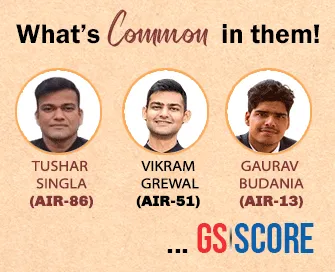
Prelims Articles
Context:
On 16th July 2025, CSCs will celebrate their 16th Establishment Day at Yashobhoomi, New Delhi, unveiling a future roadmap centered on AI, cloud technologies, and rural innovation to advance Digital India and self-reliance.
Common Services Centres (CSC):
- Part of the Digital India programme, CSCs were launched in 2006 under the Ministry of Electronics and Information Technology (MeitY).
- Function as the world’s largest digital service delivery network, with 6.5 lakh+ functional centres across India.
Key Features:
- Each CSC is run by a Village Level Entrepreneur (VLE).
- Operates under CSC e-Governance Services India Limited (CSC SPV).
- Operates as a Public-Private Partnership (PPP) model.
- Offers Government to Citizen (G2C), Business to Citizen (B2C), financial, legal, education, and agriculture-related services.
Services Delivered through CSCs:
- G2C Services:Aadhaarenrollment, PAN, passport, utility bill payments, DigiLocker.
- Financial Services:DigiPay (AEPS), insurance schemes (PMJJBY, PMSBY), pension services (NPS, Atal Pension Yojana).
- Education & Skills: CSC Academy, NIOS/IGNOU registration, digital literacy (PMGDISHA).
- Health: Telemedicine (eSanjeevani), PM-JAY.
- Agriculture: PM-KISAN, KCC, e-Agri services, FPO support, GrameeneStore.
- Legal: Tele-Law, eStamp, document registration.
- Other Utilities: Travel bookings, DTH/mobile recharge, sale of accessories.
Recent Developments:
- CSC-NABARD-Ministry of Cooperation Partnership (2022): Enabled Primary Agricultural Credit Societies (PACS) and LAMPS to deliver CSC services post-training.
- Focus on financial inclusion and community empowerment via cooperative societies.
Vision for the Future:
- Introduction of AI-enabled services, cloud technologies, and digitally-enabled rural livelihoods.
- Expansion of CSC Academy, GrameeneStore, and promotion of rural entrepreneurship.
- Strengthening of SHGs and FPOs through digital platforms
Significance:
- Integral to Digital Governance, financial inclusion, rural empowerment, and last-mile service delivery.
- Contributes to Atmanirbhar Bharat and SDG goals related to digital access, economic inclusion, and gender equality.


Prelims Articles
Context:
The National Workshop on O&M Policy for Rural Piped Water Schemes concluded, focusing on tech-driven, transparent, and data-led governance tenhance rural water sustainability under Jal Jeevan Mission
Organisers and Purpose:
- Conducted by Department of Drinking Water and Sanitation (DDWS), Ministry of Jal Shakti.
- Aim: Tdevelop a robust policy framework for Operation & Maintenance (O&M) of rural piped water supply under the Jal Jeevan Mission (JJM).
Focus Areas of the Workshop:
- Institutional design, financing, and community engagement.
- Integration of technology and digital innovations in rural water governance.
- Real-time monitoring and predictive maintenance tenhance service delivery.
Technologies Highlighted:
- AI, IoT, GIS, SCADA, and Decision Support Systems (DSS) used for fault detection, equitable water distribution, and energy optimization.
- Mobile-based data collection for consumer-provider feedback loops.
- Platforms such as JJM Dashboard, Meri Panchayat App, and PM Gati Shakti used for digital governance.
Key State-Level and Institutional Innovations:
- Madhya Pradesh: Jal Rekha platform for real-time monitoring.
- Tripura: Groundwater recharge using CGWB-approved wells.
- Uttarakhand: SARRA initiative for spring rejuvenation.
- BISAG-N and ISRO-NRSC: Satellite and GIS-based water planning.
- AIILSG: Predictive maintenance via citizen engagement tools.
- NWIC & CGWB: FAIR water data policy, inventory systems, and DPR support.
Digital Implementation Status (as per workshop data):
- 79% of States/UTs enabled digital bill payment.
- 46% allow online tracking of water connections.
- 57% maintain consumer digital databases.
- Only 14% have linked water quality systems tWater Quality Management Information System.
|
Jal Jeevan Mission (JJM) Background and Evolution:
Scheme Type and Funding Pattern:
Key Achievements (As per Economic Survey 2024–25):
States with 100% Coverage:
UTs with 100% Coverage:
|


Prelims Articles
Context:
Assam has initiated the genetic analysis of 2,573 rhino horn samples under the RhoDIS India programme at the Wildlife Institute of India, aiming to create a forensic DNA database to strengthen rhino conservation and anti-poaching efforts
RhoDIS India (Rhino DNA Index System):
- RhoDIS is a forensic tool designed to create a DNA database of individual rhinos through horn samples.
- It allows tracking of the origin of confiscated horns and aids in anti-poaching law enforcement.
- India’s RhoDIS program is modeled on a similar system developed in South Africa.
Rhino Horn Sample Destruction in Assam (2021):
- On September 22, 2021 (World Rhino Day), Assam destroyed 2,479 out of 2,623 stored horns.
- Horns retained included those involved in legal cases (50 horns) or scientifically/heritage-significant samples.
- Small samples from most horns were preserved for future DNA analysis and forensic referencing.
Objective of Current DNA Study:
- Conducted by Wildlife Institute of India (WII) genetics laboratory
- To develop individual DNA profiles and detect any shifts in Short Tandem Repeat (STR) allele frequencies over time.
- Helps assess rhino population structure, genetic health, and trace poaching sources.
Conservation and Legal Implications:
- This initiative will strengthen wildlife crime detection and prosecution.
- The database can serve as a deterrent against illegal rhino horn trade.
- It aligns with India’s obligations under CITES and national efforts under Project Rhino and Kaziranga’s Rhino Conservation Plan.

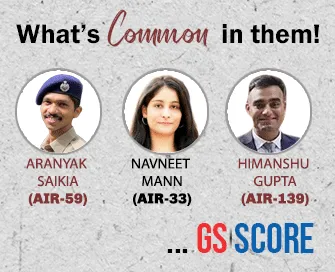
Prelims Articles
Context:
On July 12, 2025, Union Home Minister Amit Shah directed the Delhi Government to enhance sewage treatment capacity to 1,500 MGD by 2028, aiming to combat severe Yamuna River pollution through coordinated inter-state efforts and infrastructure upgrades.
Yamuna River Pollution and Sewage Treatment: Urban Water Governance and Inter-State Coordination
Present Status of STP Infrastructure in Delhi
- As per current data, Delhi has sewage treatment capacity of 764.2 MGD.
- However, it falls 04% short of the actual sewage generated.
- The Delhi Government had earlier targeted 5 MGD by June 2027.
- Amit Shah has now asked for expansion to 1,500 MGD by 2028, nearly doubling the current capacity.
Pollution Hotspots and Technological Interventions
- Major drains contributing to Yamuna pollution:
- Najafgarh Drain
- Shahdara Drain
- Proposed interventions:
- Drone-based surveys to identify sources and extent of pollution.
- Regular third-party testing of STP effluents.
- Better tracking of Biochemical Oxygen Demand (BOD)
Key Sources of Pollution
- Untreated Domestic Sewage: Major contributor from unauthorized colonies in Delhi and surrounding areas.
- Ineffective STPs: Delhi has 38 STPs, many underperform or operate below capacity.
- Industrial Waste: CETPs (30 units) often fail to treat effluents from textile, dye, and electroplating industries.
- Agricultural Runoff: Pesticides and fertilizers cause nutrient pollution and eutrophication.
- Solid Waste Dumping: Plastics and debris reduce flow and degrade water quality.
- Reduced Freshwater Flow: Excess diversion at Hathnikund and Wazirabad Barrages limits dilution capacity.
Role of Multi-Stakeholder Governance
- Union Ministries:Housing & Urban Affairs, Jal Shakti, Home Affairs
- State Actors:Delhi Government, Delhi Pollution Control Committee (DPCC), Delhi Jal Board (DJB)
- Central Agencies: CPCB, MoEFCC, National Mission for Clean Ganga
- Inter-state Cooperation: Delhi, Haryana, Uttar Pradesh required to act jointly on:
- Industrial discharge control.
- Flow management at river entry points.
- Sharing STP and CETP data.
|
Yamuna River Geographical Profile
Major Tributaries
Pollution Hotspots
Government Initiatives
|


Prelims Articles
Context:
DRDO and IAF successfully flight-tested the Astra BVRAAM with an indigenously developed Radio Frequency (RF) seeker from a Su-30 Mk-I, marking a major milestone in India's indigenous air-to-air missile capability.
About Astra BVRAAM:
- Type: Beyond Visual Range Air-to-Air Missile (BVRAAM).
- Platform: Integrated and fired from Su-30 Mk-I fighter aircraft.
- Range: Exceeds 100 km, capable of engaging targets beyond visual range.
- Guidance System: Features inertial navigation, mid-course update, and terminal active homing via indigenous RF seeker.
- Seeker Type:Indigenously developed Radio Frequency (RF) seeker by DRDO.
- Target Capabilities: Capable of engaging high-speed aerial targets under varying platform conditions and angles.
Strategic Importance:
- Represents a critical step towards self-reliance in defence technology under Aatmanirbhar Bharat.
- Reduces dependency on imported air-to-air missile systems such as R-77 or Meteor.
- Successful integration with Indian Air Force platforms (Su-30MKI) enhances operational flexibility and air dominance capabilities.
- Over 50 public and private industries including HAL have contributed, showcasing defence-industry collaboration.
Development and Testing:
- Tested under supervision of Integrated Test Range (ITR), Chandipur.
- All sub-systems, including propulsion, avionics, and seeker, functioned as expected.
- Missile demonstrated pin-point accuracy in both test cases against unmanned aerial targets.
|
PYQ: Consider the statements: (2023) 1. Ballistic missiles are jet?propelled at subsonic speeds, while cruise missiles are rocket?powered only initially. 2. Agni?V is a medium?range supersonic cruise missile; BrahMos is a solid?fuelled intercontinental ballistic missile. Which of the following statements is/are correct? (a) 1 only (b) 2 only (c) Both 1 and 2 (d) Neither 1 nor 2 |

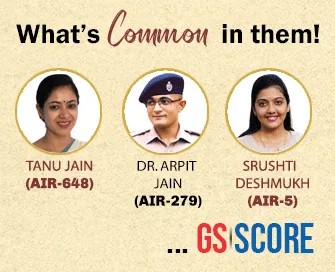
Editorials
Context:
The Centre’s push for a three-language policy under the National Education Policy (NEP) has reignited the national debate on the medium of instruction, raising concerns over constitutional rights, educational outcomes, and social equity in multilingual India
The Legal and Constitutional Dimensions
- Supreme Court’s Verdict on Medium of Instruction: The Supreme Court in 2014 struck down Karnataka’s 1994 government order mandating Kannada as the compulsory medium of instruction up to Class 4, citing that such mandates violate constitutional freedoms of expression and choice in education.
- Freedom of Educational Institutions: Private unaided and aided institutions retain the right to choose the medium of instruction based on market demand and parental preferences, reinforcing the autonomy granted under Article 19(1)(g) of the Constitution.
- Constitutional Tension in Language Policy: The three-language policy promoted by the Union government under NEP intersects with federal and linguistic rights of States, making any national-level imposition on language sensitive and legally contestable.
Educational and Pedagogical Perspectives
- Pedagogical Support for Mother Tongue Instruction: Research in child development and education supports early instruction in a child's first language for better comprehension, cognitive development, and foundational literacy.
- Ambiguity in Identifying Mother Tongue: In India’s multilingual environment, determining a definitive ‘mother tongue’ is complex, especially in urban and migrant communities, thereby complicating language-based instruction mandates.
- Limitations of Monolingual Policy: Singular emphasis on vernacular languages without parallel English instruction risks excluding students from the national and global economy, especially in technical and higher education spheres.
Equity, Mobility, and Ground Realities
- English as a Vehicle for Social Mobility: English education continues to be perceived by marginalized and subaltern caste groups as a tool for empowerment, dignity, and economic upliftment in a stratified society.
- Risk of Deepening Inequality: If government schools fail to offer English medium education, only affluent students can access private English schools, thus exacerbating socio-economic and educational inequalities.
- Balancing Aspirations and Identity: States like Kerala, Tamil Nadu, and Andhra Pradesh are attempting a dual-language approach—promoting both regional languages and English medium education to meet cultural and aspirational needs simultaneously.
Practice Question:
"Medium of instruction in Indian schools remains a contentious issue straddling pedagogical effectiveness, constitutional freedom, and social equity." Critically analyse the implications of mandating mother tongue education in the context of India’s linguistic diversity and aspirations for English-based upward mobility. (250 words)


Editorials
Context:
With the U.S. reassessing its foundational strengths in universities, corporations, and immigration, India is presented with a strategic opening to accelerate domestic reforms and position itself as a global economic and innovation leader.
America's Self-Inflicted Challenges and Global Position
- Assault on Universities and Research Ecosystem: The U.S. government’s skepticism toward its own elite academic institutions — despite their global leadership in Nobel Prizes and scientific innovation — threatens the ecosystem that underpins global biotech, medicine, and IT advancements.
- Policy Missteps in Global Supply Chains; Protectionist measures like import tariffs and reshoring manufacturing overlook the efficiency gains and poverty reduction achieved through global supply chains, inadvertently offering India a window to scale its industrial base.
- Restrictive Immigration Trends; Anti-immigration sentiments and tightening visa regimes in the U.S. risk disrupting the talent pipeline that has historically benefited both nations, especially in tech and research sectors where Indian professionals have had disproportionate impact.
India’s Existing Constraints and Missed Opportunities
- Delayed Entry into Global Manufacturing Networks: Despite a young workforce, only 10% of India’s labour force is employed in factories. India lagged behind China in leveraging manufacturing-led growth, though recent geopolitical shifts may help reverse this trend.
- Weak Institutional Capacity in R&D: Unlike the U.S., India’s public and private sectors have not invested adequately in foundational science research, making the country dependent on external innovation ecosystems, especially in pharmaceuticals and deep tech.
- Lack of Strategic Policy Synchronisation: India’s policies on education, decentralisation, and labour regulation have often been fragmented, impeding the kind of rapid, coordinated growth needed to seize emerging global opportunities.
Proposed Domestic Reforms for Global Readiness
- Labour and Compliance Reforms; The article recommends a 180-day reform plan to reduce employer compliance burdens and dilute outdated criminal provisions that discourage entrepreneurship and job creation.
- Decentralisation of Governance: Greater devolution of power, resources, and administrative control to states and urban bodies is necessary for locally responsive governance and rapid implementation of infrastructure and innovation projects.
- Autonomy for Academic Excellence: Granting functional autonomy to premier institutions like IISc, IITs, IIMs, and private universities like Ashoka can catalyse innovation and elevate India’s global education standing amid declining trust in Western academic institutions.
Practice Question:
“In light of the evolving global economic and strategic landscape, particularly the reorientation of U.S. policies, critically examine how India can realign its domestic reforms in education, labour, and decentralisation to emerge as a global growth engine.” (250 words)


Editorials
Context:
India has ranked 131st out of 148 countries in the Global Gender Gap Report 2025 released by the World Economic Forum, revealing critical deficits in economic participation, health outcomes, and gender parity, despite India's rise as a global economic and digital leader.
Structural Gaps in Health and Survival
- Skewed Sex Ratio and Poor Health Indicators:India’s sex ratio at birth remains among the most skewed globally, and women’s healthy life expectancy is now lower than men’s, highlighting persistent son preference and neglect in reproductive and preventive healthcare.
- Widespread Anaemia as a Developmental Setback: As per NFHS-5, 57% of Indian women aged 15–49 are anaemic, impacting their learning, productivity, and safe pregnancy outcomes, pointing to a systemic neglect of women’s nutrition and primary health infrastructure.
- Failure of Budgetary Prioritisation;Inadequate public investment in primary healthcare, particularly for rural and low-income women, shows that women’s health is not being treated as a development priority, which impedes economic inclusion.
Economic Exclusion and Unpaid Work
- Low Labour Force Participation and Wage Disparity: India ranks 143rd on Economic Participation and Opportunity, with women earning less than one-third of men and a stubbornly low labour participation rate, contradicting its demographic dividend advantage.
- Invisible Care Economy in Policy: Indian women perform 7 times more unpaid care work than men, as per the Time Use Survey, yet this labour remains invisible in national accounting and poorly represented in gender budgeting or public infrastructure.
- Missed Economic Opportunity: According to McKinsey Global Institute (2015), closing gender gaps could have added $770 billion to India’s GDP by 2025. This missed opportunity highlights the economic cost of gender inequality.
Demographic Challenges and the Policy Imperative
- Rising Elderly Population and Gendered Dependency:By 2050, nearly 20% of India’s population will be senior citizens, mostly elderly women. The lack of institutional care infrastructure poses a risk of economic and social dependency.
- Shrinking Working-Age Population: As fertility rates fall below replacement levels (NFHS-5), a rising dependency ratio due to women’s exit from the workforce could undermine fiscal stability and growth potential.
- Need for Integrated Policy Interventions:Solutions require investment in health systems, redistribution of unpaid care work, and treating women as economic contributors, not just policy beneficiaries—critical to sustaining economic momentum and demographic advantage.
Practice Question:
"Discuss how structural gaps in women's health, economic participation, and unpaid care work contribute to India’s gender inequality. How can integrated policy reforms reverse the trend and support India’s demographic and economic stability?" (250 words)

